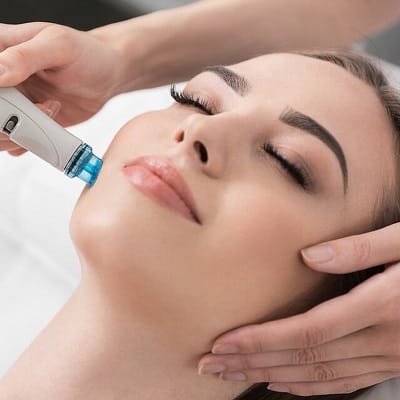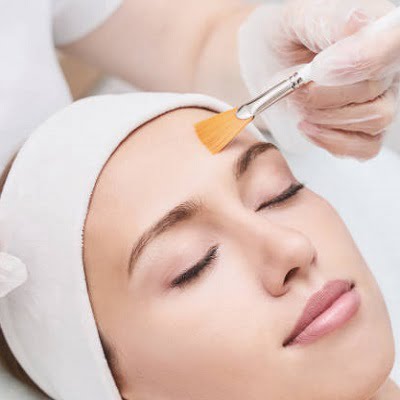
Pigmentation issues, such as age spots, sunspots, melasma, and freckles, can be a common concern for many individuals. These dark patches or marks on the skin often result from an overproduction of melanin, the pigment responsible for skin colour. While various treatments are available to address pigmentation problems, Hydrafacial in Islamabad has gained popularity as a non-invasive and effective option.
In this blog, we will explore what Hydrafacial is, how it works, and whether it can truly help get rid of pigmentation. So take a moment and read the following details!
What is Pigmentation?
Before delving into the potential of Hydrafacial for pigmentation treatment, it’s essential to understand the causes and types of pigmentation issues.
- Hyperpigmentation
- Hypopigmentation
- Post-Inflammatory Hyperpigmentation (PIH)
- Age Spots and Sunspots
An Overview – Hydrafacial:
Hydrafacial is a non-invasive, multi-step skin treatment that combines several advanced technologies and skincare techniques. This rejuvenating facial treatment is designed to cleanse, exfoliate, extract impurities, and hydrate the skin while delivering essential nutrients. The four steps of Hydrafacial:
- Cleansing and Exfoliation.
- Acid Peel.
- Extraction.
- Hydration and Protection.
Can Hydrafacial Address Pigmentation?
Now that we understand the basics of Hydrafacial let’s examine its effectiveness in addressing pigmentation issues:
- Lightening and Brightening: One of the primary goals of Hydrafacial is to enhance the skin’s tone and texture. The exfoliation and infusion of hydrating serums can help improve the appearance of pigmented areas, making them appear lighter and brighter over time.
- Reduction of Sun Damage: Sunspots and age spots, which are often the result of sun exposure, can be treated effectively with Hydrafacial. The exfoliation and serum infusion can gradually fade these dark spots, revealing a more even complexion.
- Treatment for PIH: Post-inflammatory hyperpigmentation, caused by conditions like acne, can benefit from Hydrafacial treatments. The gentle exfoliation and serum infusion can speed up the healing process and minimize the appearance of PIH.
- Melasma Management: While melasma is a complex condition that may require more extensive treatments, Hydrafacial can be a helpful complementary therapy. By reducing inflammation and supporting overall skin health, it can help manage melasma.
- Regular Maintenance: Consistency is vital when it comes to addressing pigmentation issues. Hydrafacial treatments are typically recommended in a series to achieve the best results. Regular sessions help maintain the skin’s improved tone and texture.
It’s important to note that the effectiveness of Hydrafacial in addressing pigmentation issues can vary from person to person. The severity of the pigmentation, its underlying causes, and individual skin types all play a role in determining the outcome.
Limitations of Hydrafacial for Pigmentation:
While Hydrafacial is a versatile and effective treatment for many skin concerns, it may not be a panacea for all pigmentation issues:
- Depth of Pigmentation: Hydrafacial primarily addresses superficial pigmentation concerns. Deeper pigmentation, such as deep-set melasma or severe sun damage, may require more intensive treatments like laser therapy.
- Multiple Sessions: Achieving optimal results for pigmentation often requires a series of Hydrafacial sessions, which can be time-consuming and may have associated costs.
- Maintenance Required: To maintain the results, ongoing treatments may be necessary. This can be an inconvenience for those with busy schedules or budget constraints.
- Not a Permanent Solution: While Hydrafacial can significantly improve the appearance of pigmentation, it may not offer a permanent solution. Lifestyle factors, such as sun exposure and hormonal changes, can lead to recurrent pigmentation over time.
- Individual Variability: As with any skincare treatment, personal responses may vary. What works for one person may produce different results for another.
Combining Hydrafacial with Other Treatments:
For those with stubborn pigmentation concerns, combining Hydrafacial with other treatments can be a strategic approach. Some complementary treatments that can be considered include:
- Chemical Peels.
- Laser Therapy.
- Topical Products.
- Sun Protection.
The Bottom Line!
Hydrafacial is an innovative and effective treatment for addressing pigmentation concerns. Its non-invasive nature, immediate results, and ability to target superficial pigmentation make it a popular choice among individuals seeking skin rejuvenation. However, it’s essential to manage expectations and recognize that while Hydrafacial can significantly improve the appearance of pigmentation, it may not provide a permanent solution for all cases.
For those with more complex or deep-set pigmentation issues, a combination of treatments or additional therapies may be necessary. Consulting with a qualified skincare professional at SKN Cosmetic Clinic Islamabad is the first step in developing a personalized plan to address pigmentation and achieve the best possible results. Ultimately, with the right approach and consistent care, Hydrafacial can be a valuable tool in your journey toward more transparent, more radiant skin.



